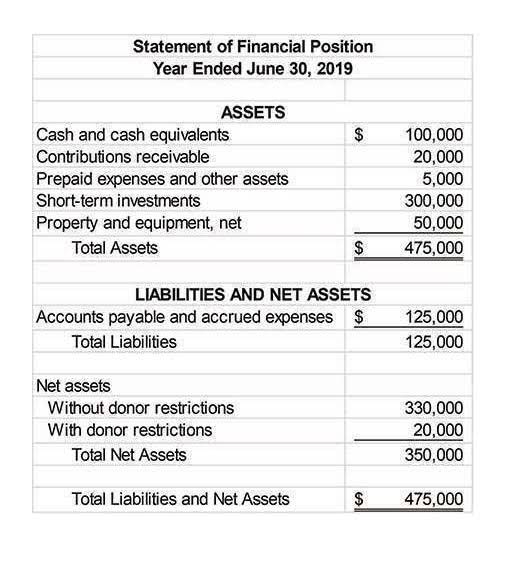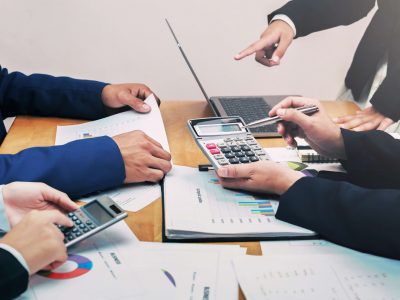4 2 Determining the useful life and salvage value of an asset

To calculate scrap value, you need to take your spot value and multiply it by the middleman’s margin. This is your spot value, which is the value of the precious metal content adjusted for weight and purity. The beginning balance of the PP&E is $1 million in Year 1, which is subsequently reduced by $160k each period until the end of Year 5. By submitting this form, you consent to receive email from Wall Street Prep and agree to our terms of use and privacy policy.
- For example, if a company is at risk of bankruptcy may be forced to sell its assets at a reasonably lower rate.
- In real estate and property management, salvage value plays a crucial role in estimating the eventual income from a property once an asset’s useful life concludes.
- Significant changes in the company’s financial position – whether favorable or adverse – can impact the returns expected from the sale of the asset.
- When a company purchases an asset, first, it calculates the salvage value of the asset.
- Owing to these factors, the companies need to make the asset cost-efficient.
Business Aspect Integration
This estimate is taken into consideration for the future since no one can really tell the https://www.gqaraldica.it/2023/06/07/how-to-calculate-cost-of-goods-sold-using-fifo/ state of assets after their useful life has passed. Every organization uses the same machinery in different ways and in different frequencies. They will also be able to calculate how long the machine is expected to be useful to a company based on how much the organization is going to use it. You can find the scrap value of your machinery and other assets by calculating their anticipated salvage value percentage.
Market Residual Value

Businesses must estimate how much an asset will be worth when it reaches the end of its useful life to ensure accurate financial reporting. Whether dealing with vehicles, industrial equipment, or real Budgeting for Nonprofits estate, knowing salvage value helps companies set depreciation rates, plan for asset disposal, and make better financial decisions. When companies buy assets like equipment or vehicles, they expect these items to lose value over time due to wear and tear. Salvage value helps determine the asset’s depreciation—how much its value drops each year—so that businesses can properly track expenses.
Salvage value and different depreciation methods
You should investigate commission rates in your area by calling local pawn shops and jewelry stores and asking what percentage of the spot price they are offering for gold and silver. For tax purposes, the IRS typically requires businesses to salvage value definition use the Modified Accelerated Cost Recovery System (MACRS) to calculate depreciation. Under MACRS, salvage value is not explicitly considered, allowing businesses to maximize depreciation deductions and reduce taxable income in an asset’s early years. On the balance sheet, salvage value contributes to an asset’s net book value, impacting a company’s financial position.
How Reinsurance Works Explained: Essential Insights for 2025

Suppose a car is leased with an original cost of $30,000, and the residual value is set at 50% after a three-year lease term, which is $15,000. Estimate the duration (typically in years) when the asset will be operational and productive for the business. The useful life of an asset is based on manufacturer guidelines, as well as industry standards and historical data. External factors like economic conditions and regulatory changes can also impact the salvage value. How different factors have impacted the salvage value of specific assets in real-world scenarios. In the manufacturing sector, salvage value is integral for assessing the life expectancy and residual worth of equipment and machinery.
How does salvage value affect financial statements?
- In order to help you advance your career, CFI has compiled many resources to assist you along the path.
- The second approach requires hiring an independent third-party appraiser to provide a professional evaluation of the asset’s worth at the end of its useful life.
- It encompasses not only the purchase price but also expenses like delivery, installation, and modifications necessary for the asset’s use.
- The units of production method is based on an asset’s usage, activity, or units of goods produced.
This method can be used to depreciate assets where variation in usage is an important factor, such as cars based on miles driven or photocopiers on copies made. With the straight line depreciation method, the value of an asset is reduced uniformly over each period until it reaches its salvage value. Straight line depreciation is the most commonly used and straightforward depreciation method for allocating the cost of a capital asset. It is calculated by simply dividing the cost of an asset, less its salvage value, by the useful life of the asset. If you run a business as an entrepreneur, you must know that all your assets start depreciating over time. After your assets like machinery have run their course and are no longer useful, it’s best to sell them.

Related AccountingTools Courses

The choice of depreciation method can significantly influence the financial portrayal of an asset’s value over time. For instance, using the straight-line method, the asset’s cost is evenly distributed over its useful life, resulting in a consistent depreciation expense each period. External factors like technological advancements, supply and demand, and economic conditions also impact salvage value, making market analysis an essential part of the calculation. Salvage value plays a key role in accounting, bookkeeping tax calculations, and overall financial decision-making.
- For tax purposes, depreciation is an important measurement because it is frequently tax-deductible, and major corporations use it to the fullest extent each year when determining tax liability.
- The carrying value of the asset is then reduced by depreciation each year during the useful life assumption.
- Consider a landscaping company that buys a commercial cargo van for field operations and equipment transport.
- Additionally, consulting professionals in the field can provide valuable insights into the complex world of salvage value and its implications for your business.
- Companies can use industry-specific data and compare it to their existing assets to estimate the salvage value.
- Each method uses a different calculation to assign a dollar value to an asset’s depreciation during an accounting year.
- In other words, the value of the excavator will depreciate by Rs. 25 Lakh over a period of 7 years.
CFI is the global institution behind the financial modeling and valuation analyst FMVA® Designation. CFI is on a mission to enable anyone to be a great financial analyst and have a great career path. In order to help you advance your career, CFI has compiled many resources to assist you along the path. Industry-standard resources like Kelley Blue Book and NADA Guides provide reliable benchmarks for estimating the salvage value of my car. These platforms analyze thousands of transactions to establish accurate pricing ranges. Trucks and SUVs often have stronger resale values than luxury sedans or sports cars.
Escribe un Comentario
Lo siento, debes estar conectado para publicar un comentario.

